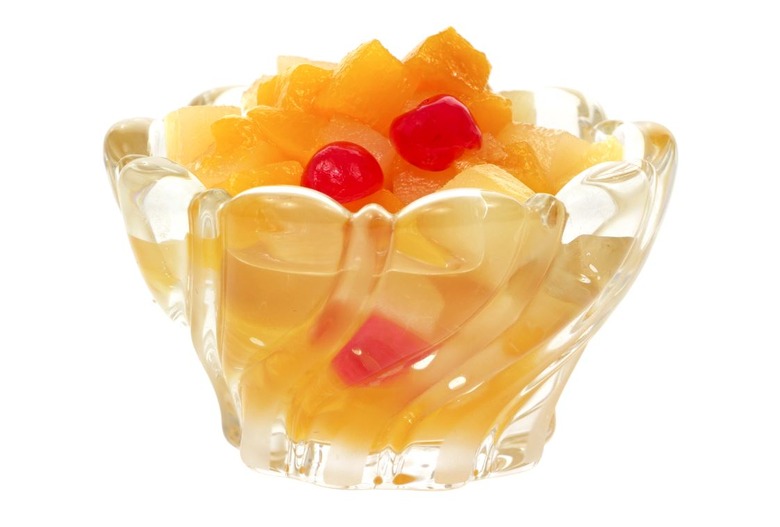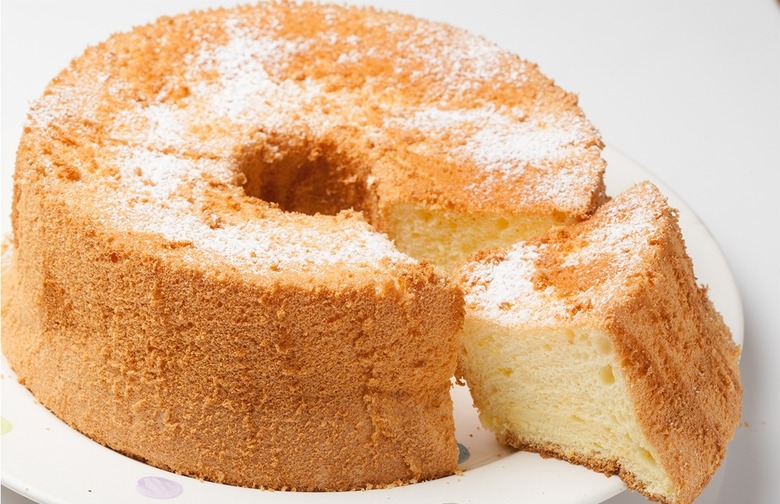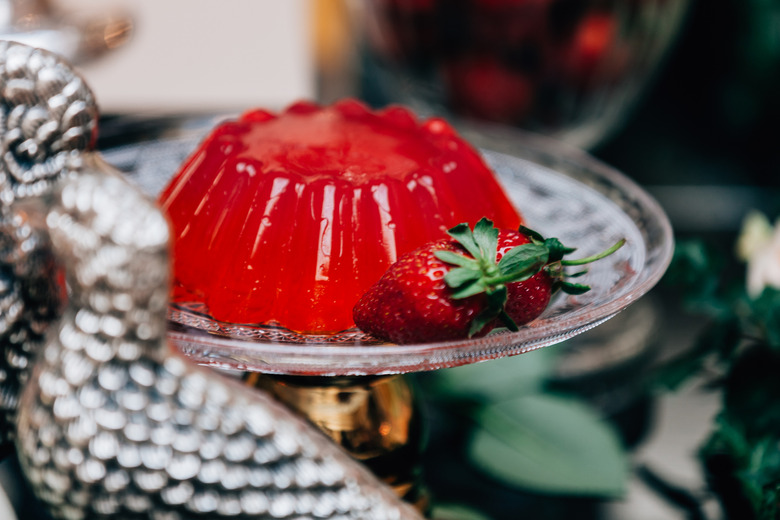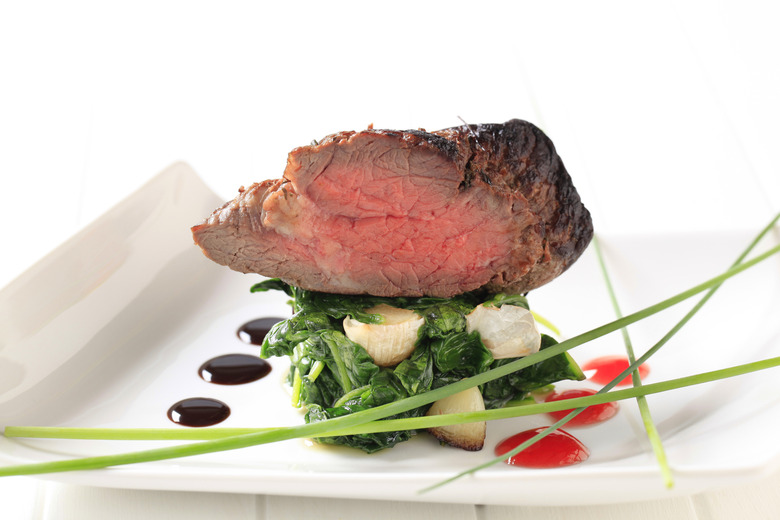The Most Peculiar Food Trends From The Decade You Were Born Gallery
Trends, by definition, come and go, and they affect every aspect of our lives, from our hairstyles to the way we decorate our living rooms. But just like perms and mullets, there are certain trends from the food world that we'd rather forget about completely.
You could argue that we're currently living in a golden age of food trends. Thanks to the internet, a bagel shop in Brooklyn can start selling a rainbow-colored bagel one day, and two weeks later imitators will have popped up across the country; a month later, rainbow-colored everything will be trendy. And don't even get us started on pumpkin spice.
Food trends in decades past might have been a little more subtle, and they might have taken a while to fully catch on, but they were definitely there, and definitely prominent. Some of them were also patently absurd. For all the ones that were actually good ideas that have stood the test of time, like brunch in the 1970s, there was also no shortage of absolute clunkers, like Jell-O molds, whose popularity defies explanation.
The food trends of the past 10 decades are actually really good reflections of the culture at large and the headspace we all were in as Americans. When times were good, excess and invention ruled the day; when times were rough, everyone had to tighten their belts. And when the times included hordes of hippies, everyone started eating granola.
1910s
During the immigrant-heavy 1910s, Chinese-American, Jewish-American, and Italian-American cuisine began to come into popularity, as did many newfangled packaged foods including Oreos and Hellmann's Mayonnaise. But the oddest culinary trend of the decade was enjoyed by the wealthiest, who considered it their duty as the top of the food chain to eat as many varieties of wild animal as humanly possible. This means that in many of the highest-end pre-war banquets, it wasn't surprising to see bear, elk, caribou, moose, and even elephant on the menu.
1920s
Prohibition threw a major wrench into the freewheeling dining style of the 1910s. The Volstead Act resulted in the closings of many of the country's best bars and restaurants, with speakeasies taking their places. Caesar salad became a popular dish thanks to it being the star menu item at a Tijuana restaurant run by Caesar Cardini, where well-heeled Southern Californians would steal away to in order to drink legally, and lots of restaurants had to entice customers with sugary treats instead of boozy ones. Hence the emergence of the oddly named fruit cocktail, which became hugely popular in the 1920s as a first course, and was often served topped with marshmallows or powdered sugar.
1930s
With the Great Depression in full swing, Americans took to extending what was available with cheap ingredients, which gave us a couple new and then-trendy foods. The first was the oddball known as mock apple pie, introduced along with Ritz Crackers in 1933. (The pie was made almost entirely out of the crackers, as apples were quite expensive.) Another was meatloaf, which was created as a way to extend a small amount of meat into a meal that could feed a family. Canned foods were also extremely popular in the 1930s, especially the enduring oddity known as Spam.
1940s
The rationing of the WWII years created a handful of food items that became quite trendy, including Postum, a roasted grain-based drink that had been around since the early 1900s but became very popular due to coffee rationing; and oil-based margarine, which rose in popularity due to dairy rationing. After the war ended and happy days were here again, sweet and light Chiffon Cake became a must-have in every household; General Mills purchased the recipe from Brown Derby restaurants in 1947, and revealed the secret ingredient: vegetable oil.
1950s
In the hopeful 1950s, the bright future ahead was on everyone's mind, and modern technology pitched in to create some very trendy foods. A huge trend was the TV dinner, which came pre-made and frozen, and didn't require any clean-up. Fresh foods were replaced by packaged ones like the super-popular Tang and Lipton's Onion Soup Mix (when mixed with a container of sour cream it gave rise to an oddball dip that's still popular today). Thanks to the efforts of entrepreneurs like Don the Beachcomber, the Tiki fad was in full-swing in the 1950s, and for reasons unknown to man, gelatin-based dishes and salads were also de rigueur at every dinner party.
1960s
The slightly eccentric dishes that were the mainstays of any happening '60s dinner party are well-known: No gathering was complete without fondue and Swedish meatballs. If you wanted to elevate your gathering, you could show off your beef stroganoff chops as well. Toward the end of the decade, the hippie movement began to get highly commercialized as well, which resulted in a couple more trendy foods that are decidedly nothing special: granola and zucchini bread.
1970s
During the "Me Decade," going out for brunch began to catch on in popularity, as did the decade's hottest brunch dish: quiche, which is still a bit of a punchline. Pasta primavera quickly caught on in popularity after first being served at New York's popular Le Cirque in 1975; the pasta-and-vegetable dish was one of the decade's major culinary contributions. And if you really wanted to impress your friends during a 1970s dinner party, you served beef Wellington.
1980s
"Nouvelle Cuisine," with its small portions, fresh ingredients, and high price tag, became so popular in the 1980s that, by the end of the decade, most food writers were exhausted by it, even though the fine dining world never really returned to the rich, sauce-heavy cuisine style that preceded it. Blackened fish (and blackened everything) was popularized by chef Paul Prudhomme, and Tex-Mex dishes like enchiladas began to work their way into the mainstream. Risotto Milanese was also a hugely popular dish in the 1980s, the decade that also saw the rise in popularity of diet plans like Nutrisystem and Slim-Fast.
1990s
If one phrase could sum up eating in the 1990s, it was "fat-free." No matter how much sugar and how many chemicals were in a food product, as long as it was fat-free or low-fat, it was considered healthy. Case in point: Snackwells, which were heralded as "guilt-free" yet were still decidedly unhealthy. Lunchables, the DIY sodium bomb for kids, also took off in the 1990s, as did Snapple. Other '90s trends included "fusion" cuisine (sashimi tacos!) and, of course, baked brie.
2000s
The fat-free trend was replaced by the low-carb trend in the 2000s thanks to people like Dr. Atkins, and the mid-2000s was dominated by the cupcake trend thanks to Sex and the City, as well as an obsession with smoothies. Sliders also found their way onto nearly every casual restaurant's menu during this decade (not just mini burgers, but ahi tuna and buffalo chicken as well), and the bacon trend that launched during this time is only now showing signs of abating.
2010s
The 2010s is (believe it or not) only a couple years away from ending. Throughout the past eight years, we've seen enough food trends to fill a book: Food trucks, gluten-free everything, kale, upscale vegan restaurants, lobster rolls, creatively topped toasts, and pumpkin spice everything are just a handful of them, and they show no signs of slowing down.
Read More: The Best Discontinued Snack Foods From the Decade You Were Born
The Most Popular Breakfast Cereals Through the Decades
What Were the Most Popular Breakfasts in the Decade You Were Born?
If You Grew Up in the '50s, You'll Definitely Remember These Foods
If You Grew Up in the '60s, You'll Definitely Remember These Foods











